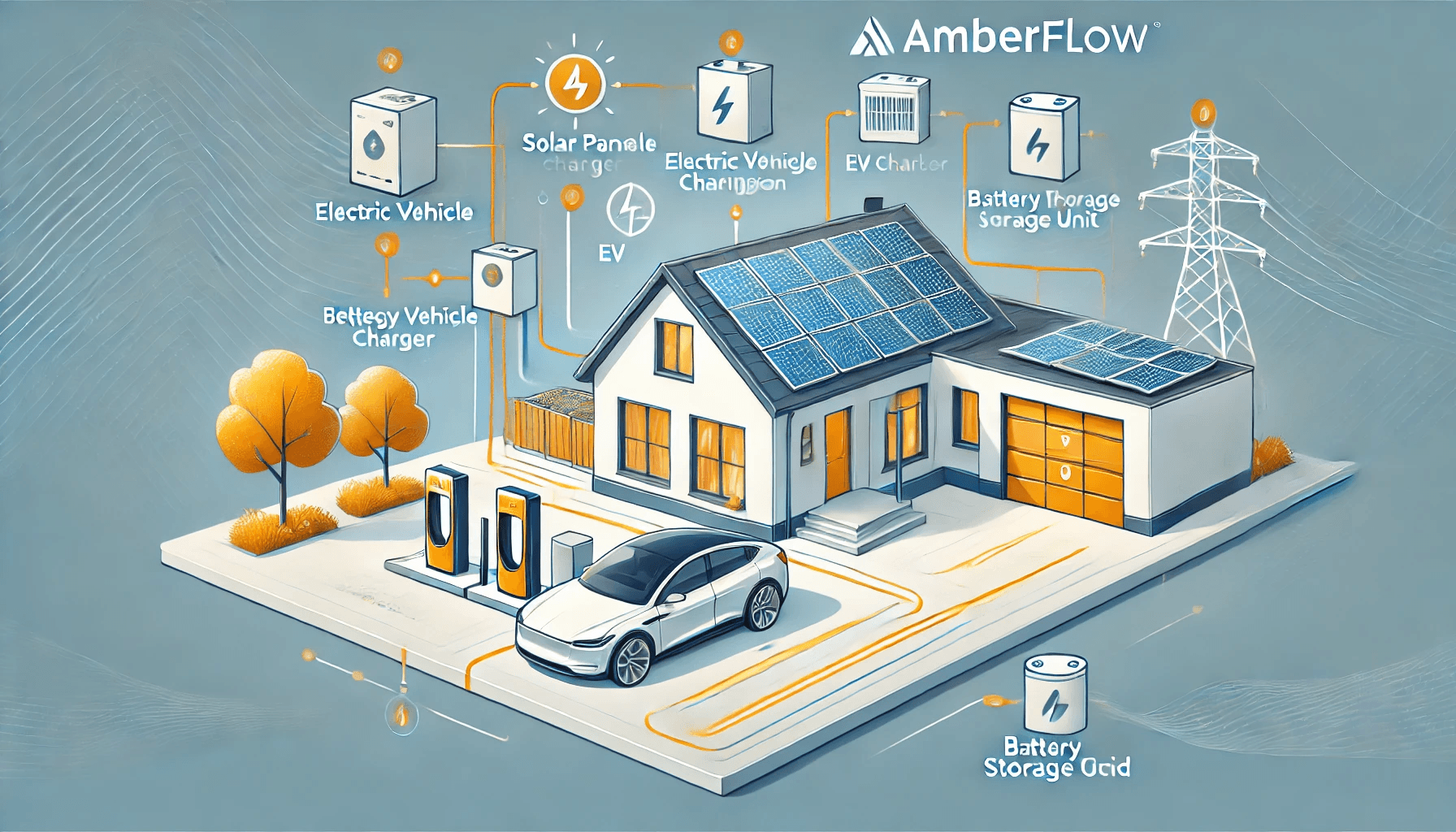
In the not-so-distant past, homes were passive consumers of energy, relying on large power plants to provide their electricity. This dynamic is rapidly changing. With advancements in technology, homes homes are not just consuming energy — they are producing and managing it as well. Many households have already gained more autonomy by becoming their own small power plants, and in this way they contribute to a more sustainable future. This transformation came in three waves:
Residential Power Generation
The integration of photovoltaic (PV) solar panels enabled residential energy production. In the mean time, Solar technology has advanced rapidly, resulting in panels that have become efficient and cheap. Besides a lower carbon footprint compared to fossil fuels, excess energy produced during peak sunlight hours can be fed back into the grid, contributing to the overall energy supply. This not only provides a financial return for households but also supports the transition to renewable energy sources.
Shifting The Demand
After the boom in residential PV, it became clear that effective management of energy is critical in future energy grids. Households that do not actively manage their energy use often face higher costs and inefficiencies. Smart home technologies and advanced energy management software play a crucial role in assisting consumer behavior. Such systems should eventually offer real-time monitoring and (autonomous) control over energy assets, ensuring that energy production and consumption is efficient and financially optimal.
For example, smart charging can enable homeowners to direct surplus solar energy to high-demand electric vehicle (EV) chargers. Reversely, when renewable production is low charging can be rescheduled to greener (and often cheaper) moments. This way, shifting of demand ensures efficient and economical use of energy.
Enhancing Energy Reliability
The third wave transformative wave is happening now. Battery storage using home batteries or EV batteries represent the next step for residential energy systems. They allow for the retention of surplus solar power, providing a consistent energy supply during non-productive periods, such as nighttime or overcast days. This not only enhances the home's energy resilience but also contributes to grid stability by allowing the stored energy to be returned to the grid when necessary.
See below how DALL-E thinks the future power plant homes looks like.
—--------------------------------------------------------------------------------------------------------------------------------
It is AmberFlow’s mission to accelerate the pace of the energy transition. By providing products for residential and commercial solar control, we want to provide energy companies and their customers with tools to become part of the future energy grid. Do you also want control of your solar portfolio? Connect with us today or send an email to info@amberflow.io.
